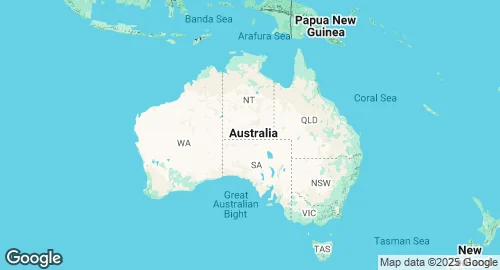Australia Military Forces 🇦🇺
Military Strength Overview
| 🛩️ Air Force | 327 active aircraft |
| ⚓️ Naval forces |
41 ships in fleet
– incl. 6 submarines |
| 🪖 Active Troops | 58,600 personnels |
| ⛑️ Reserve Troops | 30,100 personnels |
Defense Statistics & Key Metrics
| Population | 26.7 million (2023) |
| GDP | $1.7 trillion (2023) |
| GDP per capita | $64821 (2023) |
| Military Budget | $33.8 billion (2024) |
| Share of GDP in Milex | 1.9% (2024) |
| Share of Govt Expenditures | 5.0% (2024) |
| Military spends per capita | $1272 (2024) |
| Inflation Rate | 3.16% (2024) |
| Military Personnel | 60,000 (2020) |
Strategic Overview in 2025
The Australian Defence Force (ADF) is a technologically advanced and highly trained military, undergoing a significant strategic realignment to address a more contested Indo-Pacific region. While modest in size, with just over 89,000 total personnel, the ADF is a potent force, supported by a substantial defense budget of approximately 2% of GDP. Its strategic posture is shifting from a "balanced force" to a more focused "strategy of denial" to deter aggression and protect national interests in a "complex and deteriorating" security environment. This strategy is underpinned by a deep alliance with the United States and the landmark AUKUS security pact.
Military Forces
The ADF is comprised of three services: the Royal Australian Navy (RAN), the Australian Army, and the Royal Australian Air Force (RAAF).
-
Royal Australian Navy (RAN): The RAN is a modern and capable fleet centered on amphibious assault ships, Hobart-class air warfare destroyers, Anzac-class frigates, and Collins-class submarines. A major modernization is underway, with plans to acquire nuclear-powered submarines through the AUKUS pact, as well as new Hunter-class frigates and Arafura-class offshore patrol vessels. The future fleet is designed to be an "enhanced lethality surface combatant fleet" with the addition of Large Optionally Crewed Surface Vessels (LOSVs) to increase long-range strike capacity.
-
Australian Army: The Army is restructuring to create more specialized and lethal combat brigades. This includes a light combat brigade in Darwin, an armored brigade in Townsville, and a motorized brigade in Brisbane. Key equipment includes M1A1 Abrams tanks (to be upgraded), Hawkei and Bushmaster protected mobility vehicles, and M777 howitzers.
-
Royal Australian Air Force (RAAF): The RAAF is a modern air force equipped with advanced American-made aircraft. Its air combat capability is centered on the F-35A Lightning II, supplemented by F/A-18F Super Hornets and EA-18G Growler electronic attack aircraft. Its air mobility is provided by a fleet of C-17A Globemaster III, C-130J Hercules, and C-27J Spartan transport aircraft.
Defense Industry
The Australian government is heavily investing in its sovereign defense industry to enhance self-reliance. Key priorities include continuous naval shipbuilding, particularly for the future nuclear-powered submarine and frigate programs, and the domestic production of guided weapons and explosive ordnance. The government's Defence Industry Development Strategy aims to foster a robust and competitive local defense manufacturing sector.
Strategic Trends
Australia's defense policy is increasingly shaped by the strategic competition between the United States and China in the Indo-Pacific. The AUKUS pact with the United Kingdom and the United States is the cornerstone of its future defense posture. This agreement will not only provide Australia with nuclear-powered submarines but also facilitate collaboration on advanced capabilities like artificial intelligence, cyber warfare, and long-range strike weapons. This marks a significant enhancement of Australia's military power and a deepening of its alliance with the US, moving toward "interchangeability" of forces. The ADF is also focused on enhancing its presence in Australia's northern approaches and increasing its ability to operate in the littoral environments of Southeast Asia and the Pacific.
Australian Military Budget History
Population and Military Personnel Trends
GDP and Inflation Rate Trends
Australian Aircraft Manufacturing
| Model | Manufacturer | Year | Number |
|---|---|---|---|
| GA8 Airvan | GippsAero | 1995 | 250 |
| Nomad | GAF | 1971 | 172 |
Military Expenditure: SIPRI Milex.
